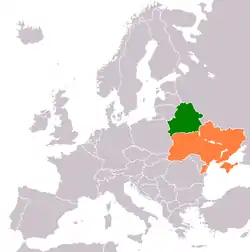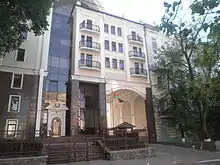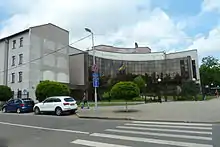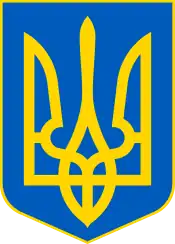Belarus–Ukraine relations
Belarus–Ukraine relations (Belarusian: Беларуска-ўкраінскія адносіны, Bielaruska-ŭkrainskija adnosiny, Ukrainian: Українсько-білоруські відносини, Ukrayins'ko-Bilorus'ki vidnosyny, Russian: Белорусско-украинские отношения, Belorussko-ukrainskiye otnosheniya) are foreign relations between Belarus and Ukraine. Both countries are full members of the Baku Initiative and Central European Initiative.
 | |
Belarus |
Ukraine |
|---|---|
History
Pre-1991 background
Both countries were historically part of Kievan Rus', and successively ruled by the Polish–Lithuanian Commonwealth, the Second Polish Republic, and ultimately, the Russian Empire. Prior to the 1991 breakup, both countries were part of the Soviet Union as the Belarusian SSR and Ukrainian SSR when they were the founding members of the United Nations in 1945. Being Slavic nations, both Belarus and Ukraine share closely related cultures and are predominantly inhabited by the East Slavic ethnic groups of Belarusians and Ukrainians respectively, along with a few Russians.
Modern era
Today, the two countries share an 891–km border. An agreement on the state border between Belarus and Ukraine signed in 1997 was to be submitted to the Belarusian parliament for ratification after Belarusian President Alexander Lukashenko and former Ukrainian President Viktor Yushchenko finished the process of the formalization of the border issues between the two states early November 2009.[1]
In August 2020, during the Belarusian protests against Lukashenko, Ukraine recalled its Ambassador to Belarus for the first time to assess "the new reality" and prospects of further bilateral relations between the two neighbouring countries.[2] Belarus returned detained contractors (whom Lukashenko said were part of the Wagner Group) to Russia,[3] coming in defiance of Ukrainian calls to send those who were detained to Ukraine to be prosecuted for over their role in the War in Donbass.
Diplomatic visits
- From Ukraine to Belarus
- Petro Poroshenko (Minsk, 2014)[4]
- Petro Poroshenko (Minsk, 2015)[5]
- Petro Poroshenko (Gomel, 2018)[6]
- From Belarus to Ukraine
- Alexander Lukashenko[7][8] (Kyiv, 2004)
- Alexander Lukashenko (Kyiv, 2009)
- Alexander Lukashenko (Kyiv, 2017)
- Alexander Lukashenko (Zhytomyr, 2019)
Resident diplomatic missions
- Belarus has an embassy in Kyiv.[9]
- Ukraine has an embassy in Minsk and a consulate-general in Brest.[10]
 Embassy of Belarus in Kyiv
Embassy of Belarus in Kyiv Embassy of Ukraine in Minsk
Embassy of Ukraine in Minsk
See also
References
- Belarus to ratify border agreement with Ukraine Archived November 8, 2009, at the Wayback Machine, Interfax-Ukraine (November 5, 2009)
- "Ukraine recalls its ambassador to Belarus". Reuters. 2020-08-17. Retrieved 2020-08-21.
- Belarus hands over alleged mercenaries to Russia: Russian prosecutor
- "Ukraine keen on further dialogue with EU, Eurasian Troika – Poroshenko". Interfax-Ukraine. Retrieved 2020-09-05.
- Miller, Christopher. "What's at stake as Putin, Poroshenko meet in Minsk to talk peace". Mashable. Retrieved 2020-09-05.
- "The First Forum of Regions of Belarus and Ukraine in Gomel | BelCCI". www.cci.by. Retrieved 2020-09-05.
- "Along with Russian President Vladimir Putin and Ukrainian President Leonid Kuchma, Belarusian President Alexander Lukashenko and President of Azerbaijan Ilham Aliev also took part in the celebrations".
- "On October 27 the President of the Republic of Belarus Alexander Lukashenko together with presidents of Ukraine, Russia and Azerbaijan placed a wreath at the Tomb of the Unknown Soldier in the memorial complex "Park of Glory" in Kiev".
- Embassy of Belarus in Kyiv
- Embassy of Ukraine in Minsk
External links
- Belarusian embassy in Kyiv (Ukrainian-language link)
- Belarusian embassy in Kyiv (Russian-language link)
- Ukrainian embassy in Minsk (in Russian and Ukrainian only)
- Belarus and Ukraine cooperate in the face of Russian pressure Belarus Digest
.svg.png.webp)
